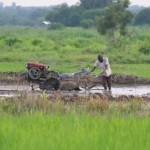This article was first published by Business Daily and is reproduced by kind permission of the editors and the author. ARI considers that the points about job creation and high dependency ratios, in particular, are worth underscoring.
On 8 March the World Bank launched the Kenya Country Economic Memorandum with the theme “From Economic Growth to Jobs & Prosperity”. Apurva Sanghi, Lead Economist and Program Leader at the Bank, made three core points during his presentation.
The first is that economic growth in Kenya is volatile, non-inclusive and marked by stagnation in agriculture and industry. In terms of volatility, Kenya’s growth has been volatile since independence and domestic shocks such as political instability (especially during election years) affect GDP growth more than external ones.
The second point was that growth is not inclusive and the country continues to register high poverty levels, the estimates of which sit between 36-42% in 2016. Further, job creation has been marginal and slow, clearly only able to absorb a fraction of the working age population that enter the labour market each year. Further, of the jobs created, the vast majority have been informal jobs.

Unemployment is a major issue in Kenya – Source: CCTV Africa
Another important point made by Sanghi was that economic growth in Kenya has been led by services which have been resilient with clear stagnation in agriculture and manufacturing. Services exports are catching up with goods exports and this is partly because the sector is less dependent on raw materials and not truly affected by changes in commodity prices.
In terms of agriculture, the main factors informing the stagnation include over-involvement of government in maize and sugar markets which keep prices high. In terms of manufacturing, it has marginal contribution to GDP, and Kenya has dropped 8 places in the rank of economic complexity of goods produced by the sector; in fact Kenya’s top exports are among the least complex.
Sanghi also mentioned that achieving the Vision 2030 GDP growth rate target of 7% has thus far been elusive with the country reaching 7% only four times since independence. In order for Kenya to grow more robustly and with less volatility, both savings and productivity have to increase, the performance of both manufacturing and agriculture need to improve, and public investment
How feasible is this? Well, with regard to savings, numerous factors negatively inform Kenyan saving habits, among which is the reality that there is no real social security net in Kenya. Yes government has a cash transfer system for the very vulnerable and poor but the lived reality for most Kenyans is that they cannot usually rely on government when they fall ill or lose a job. As a result, middle income pockets of Kenyans are under immense pressure for it is the middle and upper class that finance costs such as school fees, hospital bills and funerals for friends and relatives. Coupled with high dependency ratios linked to high levels of unemployment and underemployment, Kenya’s middle class has limited lived disposable income which of course makes saving very difficult. I have thus long held the view that the hype about the spending power of the African middle class is Panglossian.
In terms of productivity, the report itself makes the point that levels of productivity vary greatly between sectors and within sectors. Further, most Kenyans are employed in the informal sector which is characterised by low productivity due to a myriad of factors such as poor management skills, poor education levels and the lack of access to finance, technology and innovations. Therefore, the question on which government ought to be focussed is how to increase productivity, particularly in the informal sector. This is not necessarily synonymous with pushing for the formalisation of the informal sector but rather, supporting Kenyans trapped in the primarily low income informal sector by skilling up the population in informal labour, developing apprenticeship programs and loosening finance into the sector.
Finally, public investment must improve with a preponderance of development rather than recurrent expenditure. Public investment strategies must be devoid of corruption in order to ensure government spending is strategic and effective.
Anzetse Were is a development economist and weekly columnist for Business Daily Africa.












